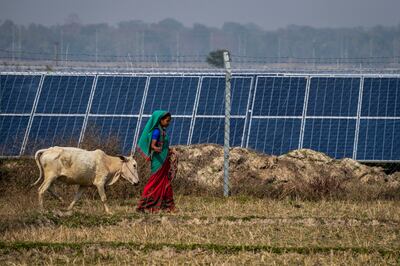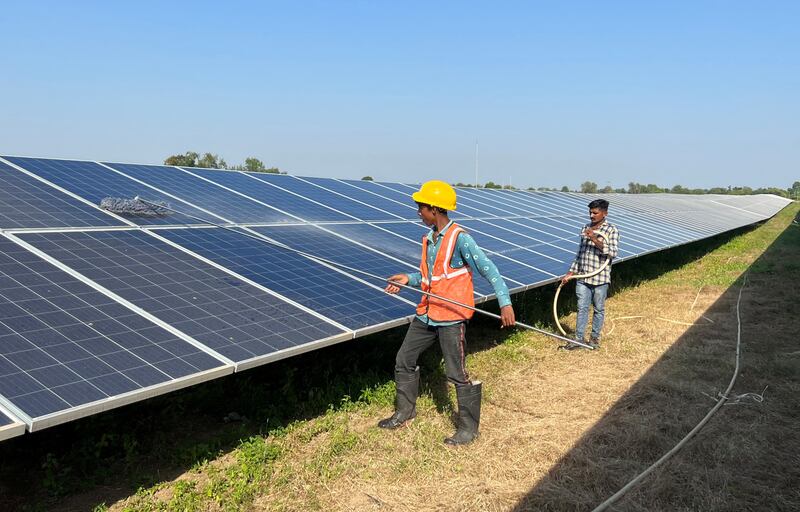India saved more than $4 billion in fuel costs through solar power generation in the first half of 2022, a report has found.
Energy think tank Ember, the Centre for Research on Energy and Clean Air and the Institute for Energy Economics and Financial Analysis released a report on the growth of solar power in seven Asian countries between January and June this year.
The report explored electricity generation analysis, energy generation cost estimates and in-depth policy assessments across China, India, Japan, South Korea, Vietnam, the Philippines and Thailand.
It found that in India, where the high price of coal is a major factor for the continuing energy crisis, solar generation helped to “avoid $4.2bn in fuel costs in the first half of the year”.
“India has established a good track record on solar capacity additions and is well positioned to make a sprint towards its target of 280 gigawatts by 2030, a six-fold increase on current levels," the report said.
“If achieved, this would make India home to one of the world’s largest solar fleets by the end of the decade."
India has been pushing for the adoption of clean energy technology to cut fuel bills and reduce emissions.
About 75 per cent of India's electricity is generated by burning coal, but the government wants to generate 500 gigawatts of renewable energy by 2030.
About 300 gigawatts is expected to come from solar power.
India has 34 major solar projects at various stages of development. It has also launched initiatives such as rooftop solar programmes and grids on farm land to power irrigation and reduce the subsidy burden on the government.
But there are several challenges, including regulations, unsigned power supply agreements, banking restrictions and basic customs duties on imported cells and modules.
India largely relies on imported components such as solar cells to support its domestic manufacturing industry.
New Delhi imported solar wafers, cells, modules and inverters worth $2.5bn in 2019-2020 from China, government data shows.

A project that aims to promote the use of solar panels on rooftops is also lagging.
The initiative has reportedly achieved 7.9 gigawatts of installed rooftop solar capacity until June this year, having set a target of 40 gigawatts by the end the year.
“India is the world’s fifth-largest country for solar installations, but it needs to work through impediments, especially to distributed solar, if it is going to reach its solar targets," the report said.
“If India achieves its solar target to provide 19 per cent of the country’s electricity generation in 2030, it could avoid at least $11bn fuel costs."
Researchers also found that five of the top 10 economies with solar capacity are now in Asia, including China, Japan, India, South Korea and Vietnam.
“Asian countries have shown that rapid solar deployment is possible, setting a remarkable example and providing valuable lessons learnt for their peers in the region,” said Dr Achmed Shahram Edianto, an electricity analyst at Ember.
“As the prices of solar and storage plummet, and the potential cost savings have started to materialise, solar dominance in Asia now looks to come much sooner than previously expected."






